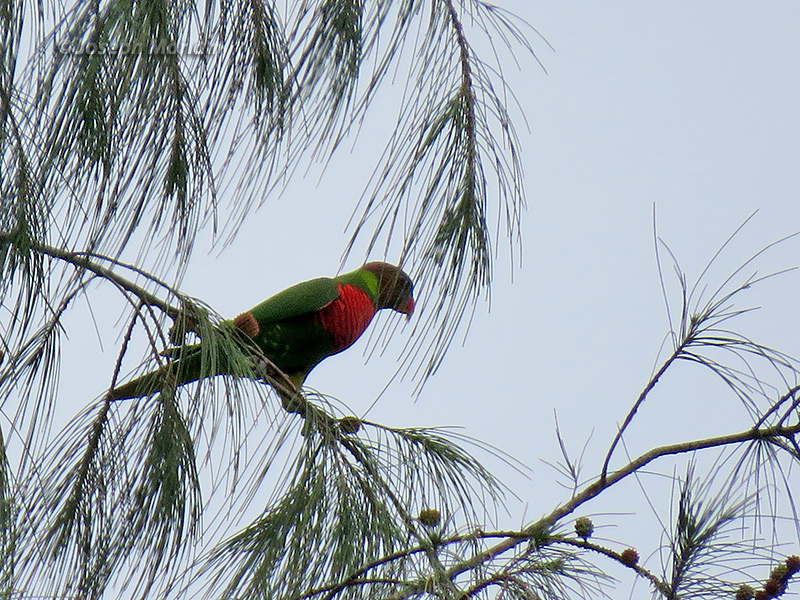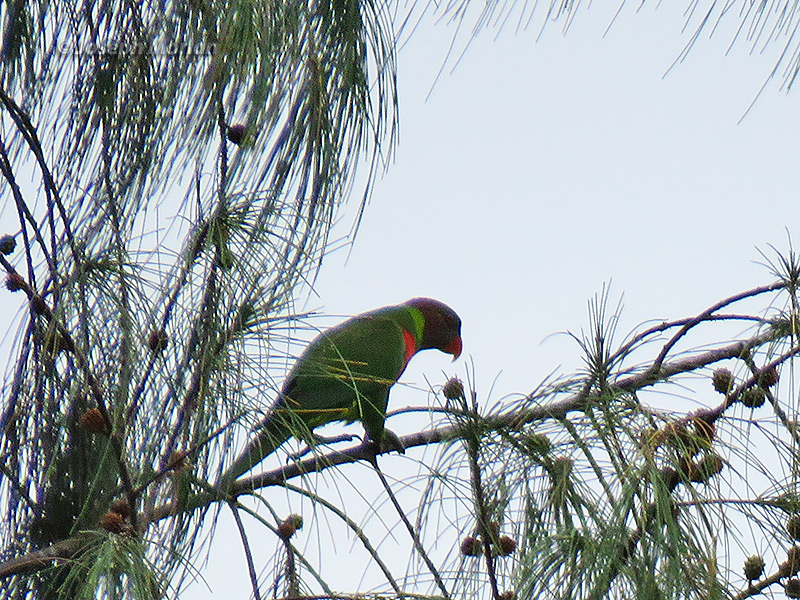

Based on studies by Braun et al. (2017), this colorful species is now split from Rainbow Lorikeet. The Coconut Lorikeet acquires Rainbow's scientific name T. haematodus while Rainbow Lorikeet becomes T. moluccanus because of priority. The two differ in the color of the belly with Coconut having the belly green while Rainbow has the belly dark blue. Also Coconut usually has more dark barring on its chest. Canon PowerShot SX60.
References:
Braun, M.P. et al. (2017). Influences of oceanic islands and the Pleistocene on the biogeography and evolution of two groups of Australasian parrots (Aves: Psittaciformes: Eclectus roratus, Trichoglossus haematodus complex). Rapid evolution and implications for taxonomy and conservation". European Journal of Ecology. 3 (2): 47–66. doi:10.1515/eje-2017-0014.
Collar, N., Christie, D.A. & Kirwan, G.M. (2019). Coconut Lorikeet (Trichoglossus haematodus). In: del Hoyo, J., Elliott, A., Sargatal, J., Christie, D.A. & de Juana, E. (eds.). Handbook of the Birds of the World Alive. Lynx Edicions, Barcelona. (retrieved from https://www.hbw.com/node/54440 on 28 November 2019).
Dutson, G. (2011) Birds of Melanesia, Christopher Helm, London.
Gregory, P. (2017) Birds of New Guinea, Including Bismarck Archipelago and Boughainville. Lynx Edicions, Barcelona.
Juniper, T. & Parr, M. (1998) Parrots: A Guide to Parrots of the World. Yale Univ. Press, New Haven and London.
Schodde, R. & Mason, I.J. (1997) Aves (Columbidae to Coraciidae). In: Houston, W.W.K. & Wells, A. eds. (1997). Zoological Catalogue of Australia. Vol. 37(2). CSIRO Publishing, Melbourne.